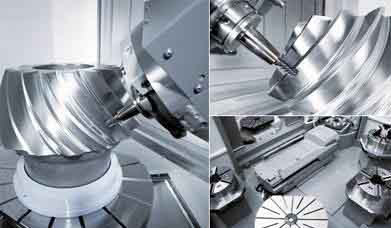La finitura delle parti è un algoritmo basato su superfici curve. Per modelli multicurva, il sollevamento della fresa deve essere ridotto il più possibile. Ciò richiede che il percorso dell'utensile di fresatura generato rientri nello stesso intervallo angolare o richieda tolleranze diverse nelle direzioni assiale e radiale.
The parts adopt the strategy of contour CNC machining. Contour CNC machining can generate tool paths of different heights according to a series of curved surface contours formed by the curved surface shape. Like horizontal slicing of part geometry, this machining strategy is the optimal strategy for semi-finishing and finishing of steep areas. By limiting the angle range of contour CNC machining (30°~90°), steep areas are processed, and other flat areas can be processed by other more strategies.
In addition to the strategy of using contour CNC machining, solutions for horizontal machining and parallel machining must also be used. The horizontal processing strategy is to automatically detect all flat areas and offset in the height direction for milling. This machining strategy uses tools with a smooth path similar to roughing. The tool path connection is also the same as rough machining, and it can carry out contour inclined feed, spiral cutting and smooth tool path connection path. If the user requests to process these flat areas multiple times, the result can be obtained by setting different Z offsets. Parallel CNC machining is one of the most widely used finishing strategies. The linear tool path is used for semi-finishing and smooth area finishing after roughing. The tool path is parallel to the X and Y planes and changes with the Z value of the surface. You can select the direction and step distance of the horizontal area. The cross path is 90° from the parallel path to process all areas. The adoption of this strategy can avoid frequent changes of direction.

Parti di finitura di fresatura
 English
English العربية
العربية 中文(漢字)
中文(漢字) Čeština
Čeština Dansk
Dansk Nederlands
Nederlands Suomi
Suomi Français
Français Deutsch
Deutsch Italiano
Italiano 日本語
日本語 ಕನ್ನಡ
ಕನ್ನಡ 한국어
한국어 Português
Português Русский
Русский Slovenčina
Slovenčina Español
Español Svenska
Svenska Türkçe
Türkçe

